Canon S100 User Report
Page 3 of 3. Version 1.0, ©2011 by Dale Cotton, all rights reserved.
Lens, including alignment and distortions
Alignment problem?. The web site Digital Photography Review created some havoc a few months back by announcing that their S100 review had been delayed due to trouble they were having getting a camera with a properly aligned lens. So naturally the first thing I did when I bought my S100 home from the store was to check to see whether it had this problem. To do this I taped some newspaper pages to a wall, put the camera on a tripod and exhaustively shot at all focal length and aperture combinations, then viewed the results in both JPEG and raw at 100% mag. From this I concluded there were indeed some bad corners at certain focal length and aperture combinations. But then I got to thinking and set up a more precise test with a target of ruled grid lines. Still some apparent alignment issues. Got to thinking some more and realized absolutely precise alignment and centering of the camera orientation to the target plane would be required, and that stymied me. I'd need a machinist to make some sort of ultra-precise jig in which to position both the camera and target. Lacking that, so far as I can tell my copy of the S100 has no alignment distortion issues anywhere in it's range.
Distortions. One enhancement spec for the S100 over the S95 that gave me pause was the increase in zoom range from 28-105mm-e to 24-120. Expensive zoom lenses do not cover a broad range of focal lengths. A pro might own a 24-70 and a 70-200 f/2.8 zoom, instead of a single 24-200. From all I've read, the larger you push the zoom range, especially if you start wide, the more the laws of optics force cruel compromises between resolution and distortion. The 24-120mm-e 5x range of the S100 is pushing 'way beyond anything that can be called tolerable. Adding f/2.0 at the wide end only exacerbates the problem.
One knock the poor little S100 takes from reviewers is that the lens starts out nicely at max F/2 but quickly dwindles to max F/5.9. Have a heart, guys – how many constant F/2 24-120 zooms do you see on the market? Think of it like this: You get a 24mm F/2 lens plus a 28mm F/2.8 lens plus a 35mm F3.5 lens plus a 50mm F4 lens... If you want fast then you have to shoot wide. End of the world?
One trick available now that could only be dreamt of even a decade ago is distortion-correction via in-camera software, and of course the Canon S100 team made full use of that option.
From my testing, such as it is, and looking at the in-camera JPEGs, I'm seeing some remaining barrel distortion and somewhat soft corners pretty much all across the focal range. But nothing more than one would expect from an expensive, high-quality lens without software correction. For raw shooters, Lightrom 3.6 and later has a lens profile option for the S100 that provides very similar software correction to that built into the camera's JPEG engine.

Fig. 7: Detail shot, 80 ISO, 1/250 sec, F/5.6
Click for in-camera JPEG (5 MB), raw (16 MB)
Resolution. The S100 is remarkably sharp all across its range. Much to my astonishment I can get landscape-usable detail at low ISOs pretty much the same as from the 14.6 megapixel sensor of the Pentax K20D dSLR I bought in 2008. Download the in-camera JPEG or the raw file above for further inspection. The in-camera JPEG file is at the highest quality setting with all-default settings for colour, contrast, and sharpness. You can get much more finely drawn detail by applying USM to taste in your raw developer.
Usable dynamic range
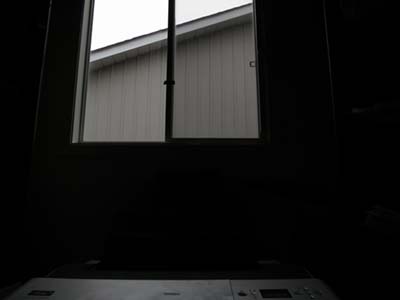
Fig. 8: DR shot (in-camera JPEG)
Click for raw (16 MB)
Everything in Fig. 8 looks near-black except the window and a bit of my printer at the bottom of the frame. To my eye as I viewed the scene the room interior had enough light for reading. I take this shot not because I expect the camera to match my eyes, but because it gives me up to an 11-stop spread of dynamic range with which to judge the camera's performance. Fig. 9 is the result of manipulating the raw file of the same shot as shown in Fig. 8 to open up the shadows. This is what my eye saw as opposed to the camera.
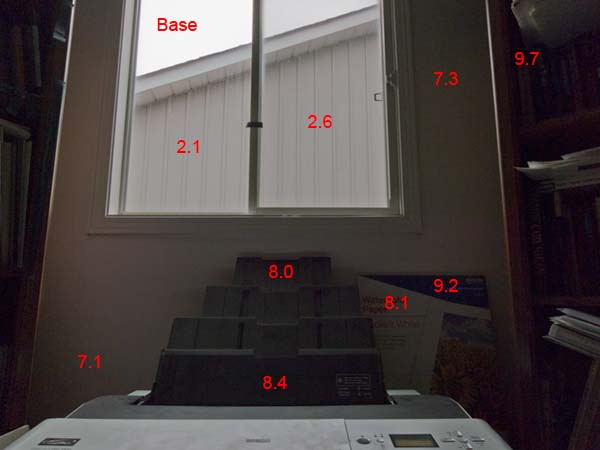
Fig. 9: Same shot with shadows opened in raw and stops indicated in red

Fig. 10: crop from Fig. 9
Click for full JPEG developed from raw (0.75 MB)
Another test I was eager to perform is dynamic range (DR). The major review sites don't seem to go there any more, and it's always questionable how to interpret the DXOmark numbers for DR. Having now done my usual DR stress test of exposing for a day-lit window (Fig. 8) then looking in the shadows within the surrounding room, I'm not sure I'm any more enlightened than when I started. In one way I could call the DR a good 9 stops at 80 ISO, since luminance detail is not entirely obliterated at that light level. But as you can see from Fig. 10, by the time you get to the 8 stop range the colour information is beyond use. What should be a plain sand-coloured wall is an oil slick of various hues peppered with grain and banding. If I turn noise reduction off in raw it's clear why: noise pixels out-number signal pixels by a large ratio.

Fig. 11: crop from same shot but taken at 800 ISO
Click for full JPEG developed from raw (0.75 MB), raw (16 MB)
Higher ISO settings are equally anomalous. If I drop down to 800 ISO (formerly, a ridiculous number for a small sensor compact), I might call the luminance DR as high as 7 1/2 stops, but colour information in the shadows is similarly scarce.
Working with the raw output of a recent dSLR one can almost do HDR from a single frame. The output from the S100 affords no such plasticity – what you see is what you get. If you want to open up the almost slide-film-like shadows of an S100 by more than a stop or two, you'll need to use fill flash or some such during exposure.
Low light ability

Fig. 12: Very dim restaurant, 800 ISO, no flash
Click for in-camera JPEG (5 MB), raw (16 MB)
After seeing the massive shadow noise in the S100's output it's no surprise that DXO reports its noise level at base 80 ISO as being almost exactly the same as that of my Nikon D7000's sensor at 800 ISO. So it's also no surprise that at 800 ISO the S100's output looks like 6400 from the D7000. Yet it is far from unusable. The perspective to keep in mind is that the S100's noise is no worse than a typical roll of 35mm neg film at any given ISO number.
The caveat here, however, is that the S100's output is more like slide film in terms of post processing. If you want to dig into the shadows in post processing, you can't go nearly as far as you may be used to without exposing swaths of garbled colour and detail-obscuring grain. In other words: don't even think about single-exposure HDR. Personally, I'm thrilled just to be able to bump the ISO up to numbers like 800 and 1600 on a pocket cam. Lack of malleability is a trade-off I'm more than happy to make.
Colour
Anyone who reads photography forum posts will quickly learn that the myth that various camera manufacturers have better or worse colour output than their competitors is endemic. I've now used Olympus, Panasonic, Fuji, Nikon, and Canon and I'm here to tell you that the differences in JPEG colour are as between wretched and horrid. Yes: Olympus and Fuji have pretty-pretty saturated and contrasty colours. These break down rapidly when you put a human being in the scene. For raw output I agree that there are fairly subtle factors like Bayer filter array strength, but these are swamped by the much larger factor that – given anything like a standard Bayer pattern – a camera's colour output is about 98% determined by some mix of noise level, white balance accuracy, and camera profile. Let's see how all this applies to the S100:
Skin tones are a particular forum sore point. In fact, as one long-suffering veteran of commercial photography once said: a photograph can be defined as a picture in which there is something wrong with the skin colour. And this dates back to the era of colour film. Digital would not be particularly better (and often rather worse) if it were not for the fairly recent ability to create device profiles then marry them together into a colour-accurate workflow. Here is a an out-of-camera JPEG of an unlovely caucasian male shot in tungsten light with an S100 at auto white balance:
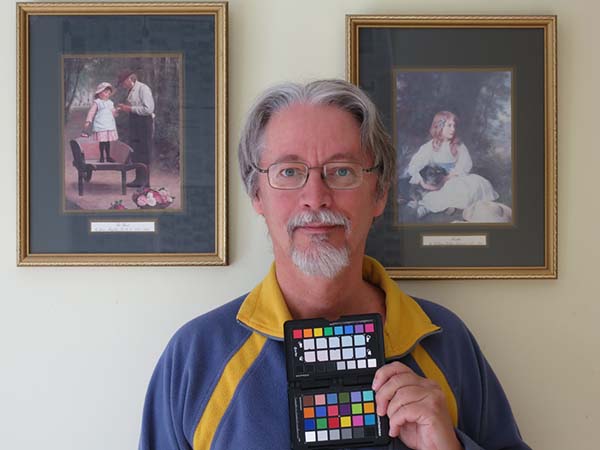
Fig. 13: S100 in-camera JPEG, auto WB
Update, May 2012: Fig. 13 was taken with the camera set to default JPEG colours. I've just discovered that there is a special setting specifically to tweak JPEG skin tones. In the Function Set screen accessed by pressing the centre button of the 4-way controller go to the My Colors option then choose the last icon for Custom Colors. Press the up arrow to get the Skin Tones slider. Set that to the leftmost position for more realistic/acceptable skin tones.
My shirt and the framed prints are spot on; the wall is desaturated; my skin is far too flushed. Here is the same thing except custom white balance has been set off an Xrite Passport:
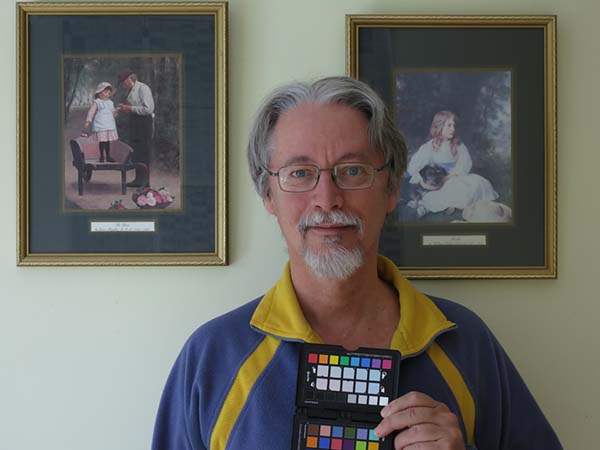
Fig. 14: S100 in-camera JPEG, custom WB
Severe cyan colour cast – something wrong here. Now here's what I actually look like:
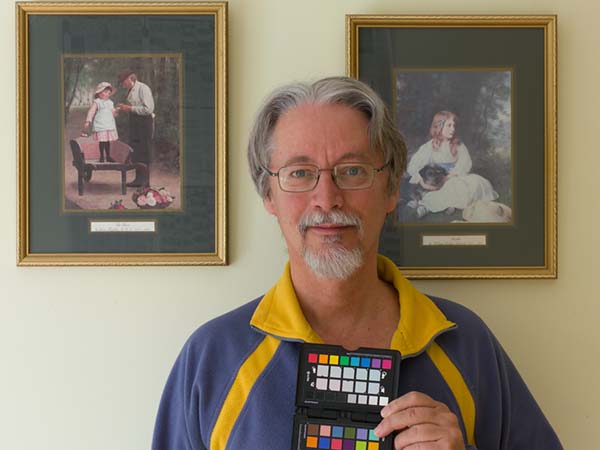
Fig. 15: S100 raw with custom profile and WB selected from gray patch
Fig. 15 is what happens when you use something like the Passport both for white balance and colour interpretation. I'm not seeing out-of-camera colour nirvana from the S100 any more than I see it from any other $500 camera.
Conclusions
I own and use a recent APS-C dSLR. My entire kit (except tripod) weighs in at 3 lbs and fits in a shoulder bag, which makes it something I can and do carry without hesitation on any photo excursion, whether hiking-based or no. The image quality I get from this is rapturous. Nevertheless, I don't take the dSLR with me when I go to the local grocery store or for a walk around the block. Equally, I don't attempt to use the dSLR for street, but no one pays any mind to a guy with a funky hat squinting at the LCD of a point&shoot. The S100 is the camera I bought to fill that supporting role to my dSLR's star billing. Let's summarize the pros and cons I've described above (plus a few that are implicit in the design):
Pros
- Truly pocketable, truly carry-everywhere
- Superb build quality
- Very usable control set
- Quite acceptable single shot shutter lag
- Excellent image stabilization
- MF distance scale
- Tight spot meter
- Excellent lens output given its 5x and F/2 design constraints
- Scads of DOF
- Image quality usable for quite a few tasks
- Tolerable 800 or even 1600 ISO (undreamt of just a few years ago)
Cons
- Inevitably, no view finder
- Inevitably, only a weak pop-up flash, situated far too close to the lens
- Lens max aperture quickly drops to f/5.9
- Limited shallow DOF
- Frustrating delay between shots
- Significant noise in base ISO shadows; increases rapidly at higher ISOs
- JPEG skin colours as bad as ever
As we've seen, the S100's IQ starts off with an 800 ISO handicap and goes downhill from there. It's lens struggles valiantly to do the too much being asked of it. If I were looking for IQ to match my dSLR's I never would have bothered to bring home the little guy. Instead, I was looking for tolerable, and was surprised to see more than that. The DR at 9 stops is at least a stop better than I expected. The S100's 800 ISO is gritty but usable. I can take handheld landscapes at low ISOs with endless DOF that enlarge very nicely so long as there doesn't happen to be anything critical in a corner.
Even more surprisingly the S100 promises to be a near-ideal street camera. Nothing makes me feel more inconspicuous or more spontaneous than a point & shoot – particularly with one as near-silent as the S100. I'm sure I'll curse the shot-to-shot delay but it's a compromise I can live with. In fact, it's almost sporting, like using a single-shot rifle for game hunting.;) I'm not into shallow DOF, since I almost always want everything in the frame to clamour for attention. The high noise levels of the sensor makes for a gritty film-like print, which works very well for street subjects. And all this can be taken indoors without flash at the price of a mere extra helping or two of grit, thanks to the combination of a usable 800 ISO plus an excellent IS.
The cons I've itemized above, and doubtless others besides cannot be dismissed, and will be deal-breakers for many. For me, the 14 day return deadline has passed unnoticed. I'm having too much fun and getting too many keepers per outing to let this little marvel pass me by. The Palm smart phone in my pocket is now six or seven years old. It looks battered and worn and the Z key no longer works, but it will stay there until it goes to electronic heaven. Yes: it's early days yet, but the S100 is just good enough that it may well suffer the same fate.